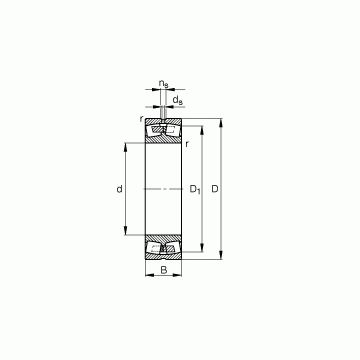Home> Company News> What Every RVer Should Know About Hydraulic Valve Adjustment
- AddressNo.7001. XUEYUAN ROAD, NANSHAN DISTRICT,SHENZHEN,CHINA
- Factory AddressNo.7001. XUEYUAN ROAD, NANSHAN DISTRICT,SHENZHEN,CHINA
- Worktime9:00-18:00
- Phone(Working Time)0531-85064681
- Phone(Nonworking Time)0531-85064680
- Fax0531-85064680
Hydraulic valve adjustment is a crucial process in maintaining hydraulic systems, ensuring they function properly and efficiently. Hydraulic systems are used in a wide range of applications, including industrial machinery, construction equipment, and even recreational vehicles (RVs). RVers can benefit from understanding how to perform hydraulic valve adjustment to keep their vehicles in good working condition.
Hydraulic valves are responsible for controlling the flow of fluid in a hydraulic system. There are many different types of hydraulic valves, including directional control valves, pressure control valves, and flow control valves. Each type of valve serves a specific purpose in the hydraulic system, such as controlling the direction of fluid flow, regulating pressure, or controlling the flow rate.
Over time, hydraulic valves can become misaligned or worn, which can cause problems with the hydraulic system. Hydraulic valve adjustment helps to keep the valves functioning properly and prevent problems from occurring. Performing hydraulic valve adjustment requires a thorough understanding of the hydraulic system and the specific valve being adjusted. The process typically involves adjusting the position of the valve or replacing any worn or damaged parts.
If the hydraulic valve adjustment is not performed correctly, it can lead to issues such as fluid leaks, reduced system efficiency, and increased wear on other components. It's important to properly diagnose any problems with the hydraulic system before attempting to adjust the valves.
Proper hydraulic valve adjustment helps to improve the performance and efficiency of the hydraulic system. It can also extend the lifespan of the hydraulic components and reduce the risk of costly repairs or replacements. In conclusion, hydraulic valve adjustment is an important aspect of maintaining a hydraulic system and ensuring it functions properly. RVers can benefit from understanding how to perform hydraulic valve adjustment to keep their RVs in good working condition and prevent problems from occurring.
Understanding Hydraulic Valves
Hydraulic valves are crucial components of hydraulic systems. They control the flow of fluid through the system, allowing the system to perform various tasks such as lifting heavy loads, moving equipment, and powering tools.
There are many different types of hydraulic valves, each designed to perform a specific function in the hydraulic system. Some of the most common types of hydraulic valves include:
-
Directional control valves: These valves control the direction of fluid flow in the hydraulic system. They are used to control the movement of hydraulic cylinders, motors, and other actuators.
-
Pressure control valves: These valves regulate the pressure of the fluid in the hydraulic system. They are used to maintain a constant pressure in the system, preventing damage to components and ensuring efficient operation.
-
Flow control valves: These valves control the flow rate of the fluid in the hydraulic system. They are used to regulate the speed of hydraulic cylinders and motors, ensuring that they operate at a consistent speed.
-
Relief valves: These valves protect the hydraulic system from overpressure by opening up when the pressure exceeds a certain level. They are used to prevent damage to components and ensure the safety of the system.
-
Check valves: These valves allow fluid to flow in one direction only, preventing backflow and ensuring that the system operates efficiently.
-
Proportional valves: These valves are used to control the flow rate and pressure of the fluid in the hydraulic system. They are particularly useful in applications where precise control is required.
Understanding the different types of hydraulic valves and their functions is essential for maintaining and troubleshooting hydraulic systems. Proper selection, installation, and maintenance of hydraulic valves can help ensure the efficient and reliable operation of the system.
Importance of Hydraulic Valve Adjustment
Hydraulic valve adjustment is essential for maintaining hydraulic systems in good working condition. Over time, hydraulic valves can become misaligned or worn, causing issues in the hydraulic system. Proper hydraulic valve adjustment helps to keep the valves functioning correctly and prevent problems from occurring.
One of the primary reasons for hydraulic valve adjustment is to maintain a constant flow of fluid in the hydraulic system. Hydraulic valves control the flow of fluid in the system, and if the valves are not functioning correctly, the fluid flow can become erratic, leading to reduced system efficiency and potential damage to other hydraulic components.
In addition to maintaining a constant fluid flow, hydraulic valve adjustment also helps to prevent damage to the hydraulic system due to high pressure. If the hydraulic valves are not adjusted correctly, excessive pressure can build up in the system, causing damage to other components such as hoses, pumps, and cylinders.
Hydraulic valve adjustment is also crucial for improving the efficiency of hydraulic systems. When the valves are properly adjusted, the hydraulic system can operate at peak efficiency, leading to lower operating costs and improved performance.
Overall, hydraulic valve adjustment is an essential aspect of hydraulic system maintenance. Regular adjustment of hydraulic valves helps to maintain a constant flow of fluid, prevent damage due to high pressure, and improve the efficiency of hydraulic systems.

How to Perform Hydraulic Valve Adjustment
Performing hydraulic valve adjustment requires careful attention to detail and a thorough understanding of the hydraulic system and the specific valve being adjusted. Here are the general steps for performing hydraulic valve adjustment:
-
Identify the valve to be adjusted: Before attempting any adjustments, identify the valve that needs to be adjusted. Refer to the manufacturer's documentation for information on the valve's location and function.
-
Shut off the hydraulic system: Before making any adjustments, shut off the hydraulic system and relieve any pressure that may be in the system. This can be done by turning off the power supply and opening the relief valve.
-
Remove the valve cover: Depending on the valve's location, you may need to remove a cover or access panel to access the valve. Use the appropriate tools to remove the cover.
-
Check the valve position: Use a visual inspection or a position indicator to verify the current position of the valve. This will help you determine the direction and amount of adjustment needed.
-
Make the adjustment: Follow the manufacturer's instructions to make the necessary adjustments to the valve. This may involve turning a screw or adjusting the position of the valve.
-
Verify the adjustment: After making the adjustment, verify that the valve is functioning properly. This can be done by observing the valve's position or by using a flow meter or pressure gauge to measure the flow or pressure in the hydraulic system.
-
Replace the valve cover: Once the adjustment has been verified, replace the valve cover or access panel.
-
Test the system: After making any adjustments, test the hydraulic system to ensure it is functioning properly. Monitor the system for any leaks or abnormal sounds.
It's important to follow the manufacturer's instructions and use the correct tools and equipment when performing hydraulic valve adjustment. If you are not comfortable performing the adjustment yourself, it's recommended to seek the assistance of a qualified hydraulic technician.
Common Issues with Hydraulic Valve Adjustment
While hydraulic valve adjustment is essential to maintaining the proper functioning of a hydraulic system, there are several common issues that can arise if the adjustment is not done correctly.
One of the most common problems that can occur when adjusting hydraulic valves is fluid leaks. If the valve adjustment is too loose or too tight, it can cause the fluid to leak from the hydraulic system. This not only leads to fluid loss, but can also cause damage to the surrounding components. In some cases, a leaky hydraulic system can even pose a safety hazard.
Another issue that can arise with improper hydraulic valve adjustment is reduced system efficiency. If the valves are not adjusted properly, the system may not be able to deliver the required flow rate and pressure, which can result in reduced efficiency and performance. This can cause other components in the system to work harder than they should, leading to increased wear and tear.
Additionally, if the hydraulic valve adjustment is not done properly, it can cause increased wear on other components in the hydraulic system. For example, if the valve is not aligned properly, it can cause the piston or cylinder to wear down faster than it should. This can lead to costly repairs or replacements down the line.
It's important to properly diagnose any issues with the hydraulic system before attempting to adjust the valves. Otherwise, adjusting the valves may not solve the problem, or may even make it worse. Regular maintenance and inspection of the hydraulic system can help prevent issues from occurring and ensure that the hydraulic valve adjustment is done correctly.
Benefits of Proper Hydraulic Valve Adjustment
Proper hydraulic valve adjustment is crucial for maintaining a hydraulic system's optimal performance and longevity. By performing regular hydraulic valve adjustments, you can extend the life of your hydraulic components and prevent costly repairs or replacements. Here are some benefits of proper hydraulic valve adjustment:
-
Improved performance and efficiency: Hydraulic valve adjustment helps to ensure that the valves are functioning properly, which leads to improved system performance and efficiency. A properly functioning hydraulic system can help to increase productivity and reduce downtime.
-
Increased lifespan of hydraulic components: Misaligned or worn hydraulic valves can cause premature wear and damage to other hydraulic components. Proper hydraulic valve adjustment can help to prevent this by keeping the valves in good condition, which extends the life of the components.
-
Reduced risk of costly repairs or replacements: If hydraulic valves are not adjusted properly, it can lead to system failure or damage to other components. This can result in costly repairs or replacements. By performing regular hydraulic valve adjustments, you can reduce the risk of these issues occurring and save money in the long run.
-
Improved safety: A malfunctioning hydraulic system can be dangerous to operators and those nearby. By performing regular hydraulic valve adjustments, you can help to ensure the safety of everyone in the vicinity of the system.
In summary, proper hydraulic valve adjustment is essential for maintaining a hydraulic system's optimal performance, safety, and longevity. By performing regular adjustments, you can extend the life of your hydraulic components, reduce the risk of costly repairs or replacements, and ensure the safety of everyone nearby.

Hydraulic valve adjustment is a crucial aspect of maintaining hydraulic systems, and RVers can benefit greatly from understanding how to perform this task. In this guide, we have explored the importance of hydraulic valve adjustment, the different types of hydraulic valves, and how to perform hydraulic valve adjustment. We have also discussed common issues that can arise when performing hydraulic valve adjustment and the benefits of proper adjustment.
Proper hydraulic valve adjustment is essential for maintaining the performance and efficiency of hydraulic systems. It helps to prevent problems from occurring and can extend the lifespan of hydraulic components, reducing the risk of costly repairs or replacements. By understanding how to perform hydraulic valve adjustment, RVers can keep their hydraulic systems functioning properly and prevent issues from arising.
In conclusion, hydraulic valve adjustment is an important aspect of maintaining hydraulic systems, and RVers can benefit greatly from understanding how to perform this task. By following the manufacturer's instructions and using the correct tools and equipment, RVers can ensure that their hydraulic systems are functioning properly and efficiently. Regular maintenance, including hydraulic valve adjustment, can help prevent costly repairs and keep RVs in good working condition for years to come.


 232/500 KCW33+H32/500 SKF Spherical Roller Bearings
232/500 KCW33+H32/500 SKF Spherical Roller Bearings 23128-E1A-M FAG Spherical Roller Bearings
23128-E1A-M FAG Spherical Roller Bearings